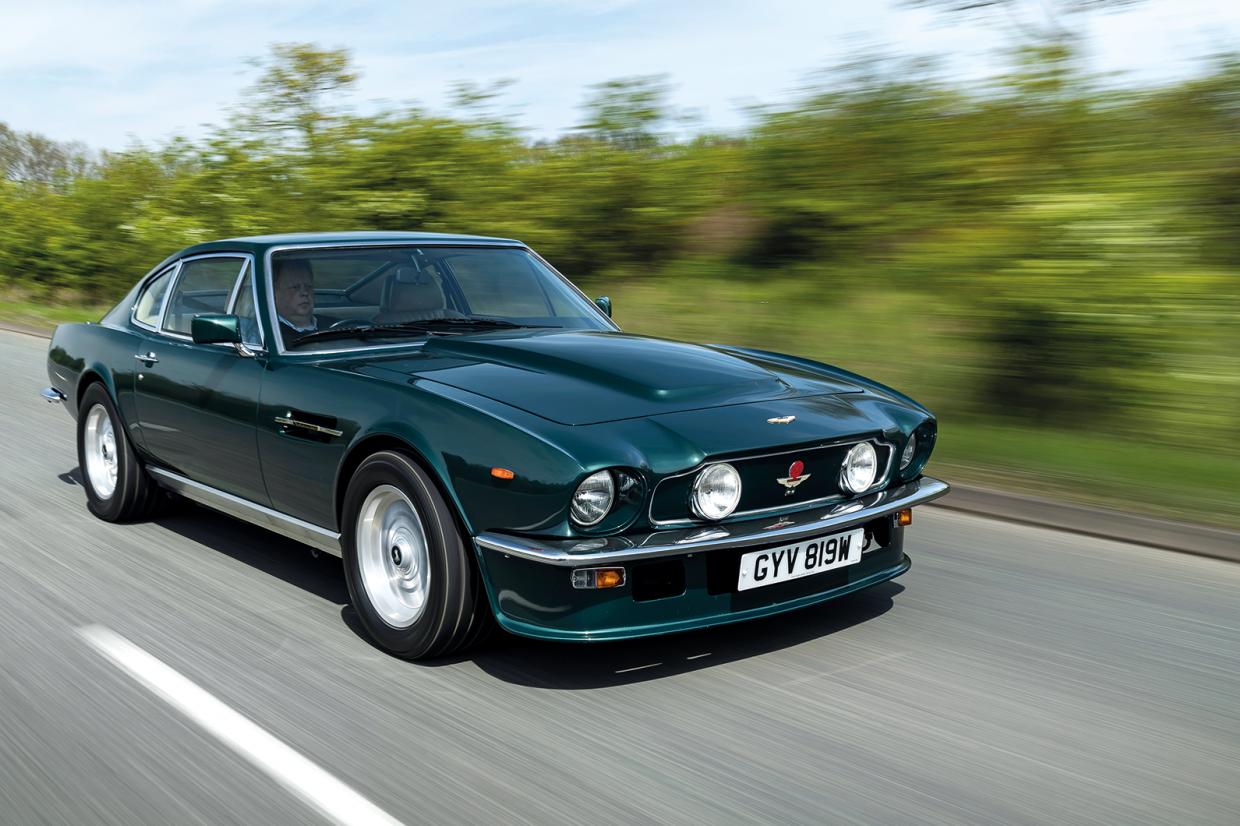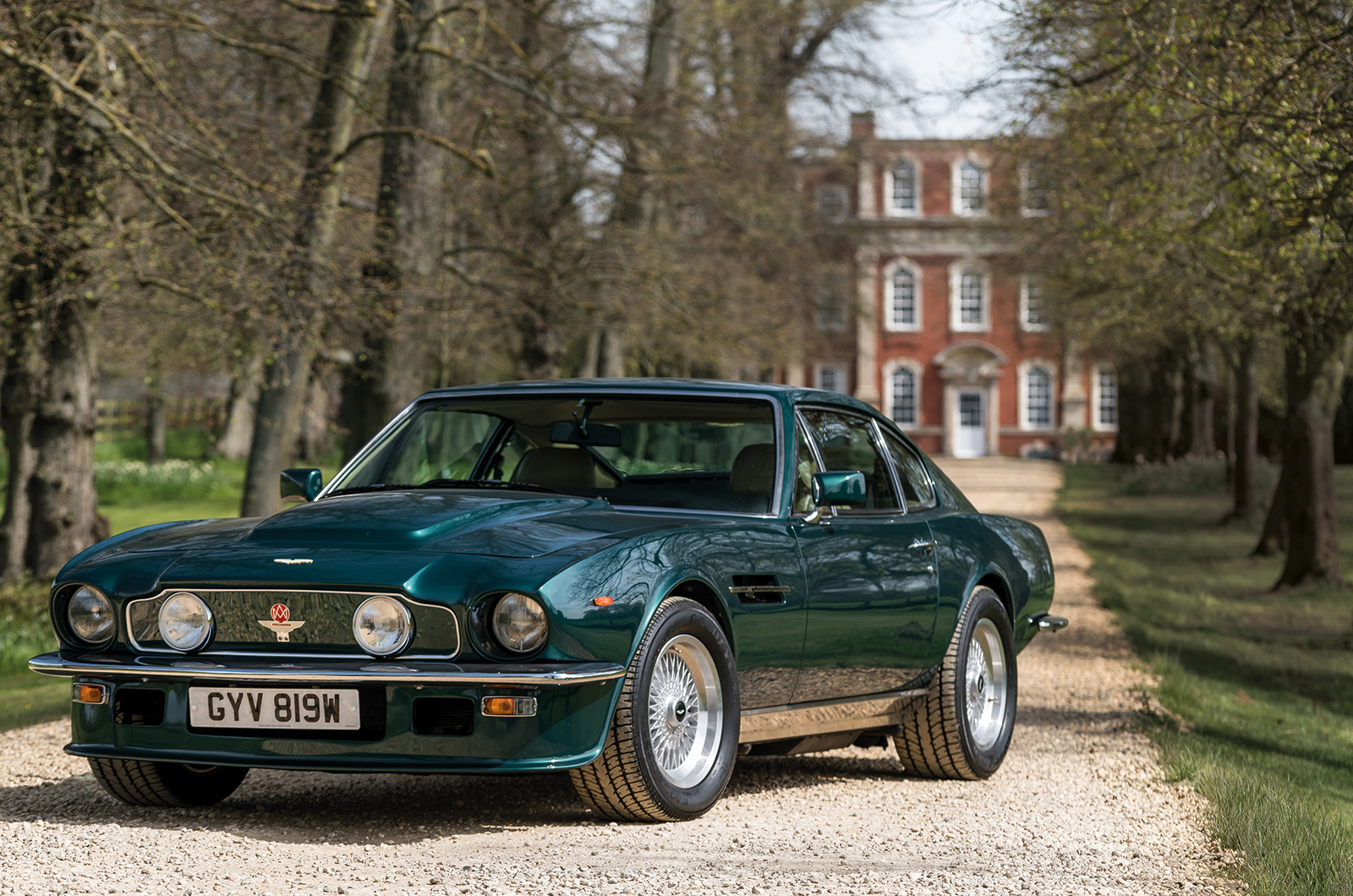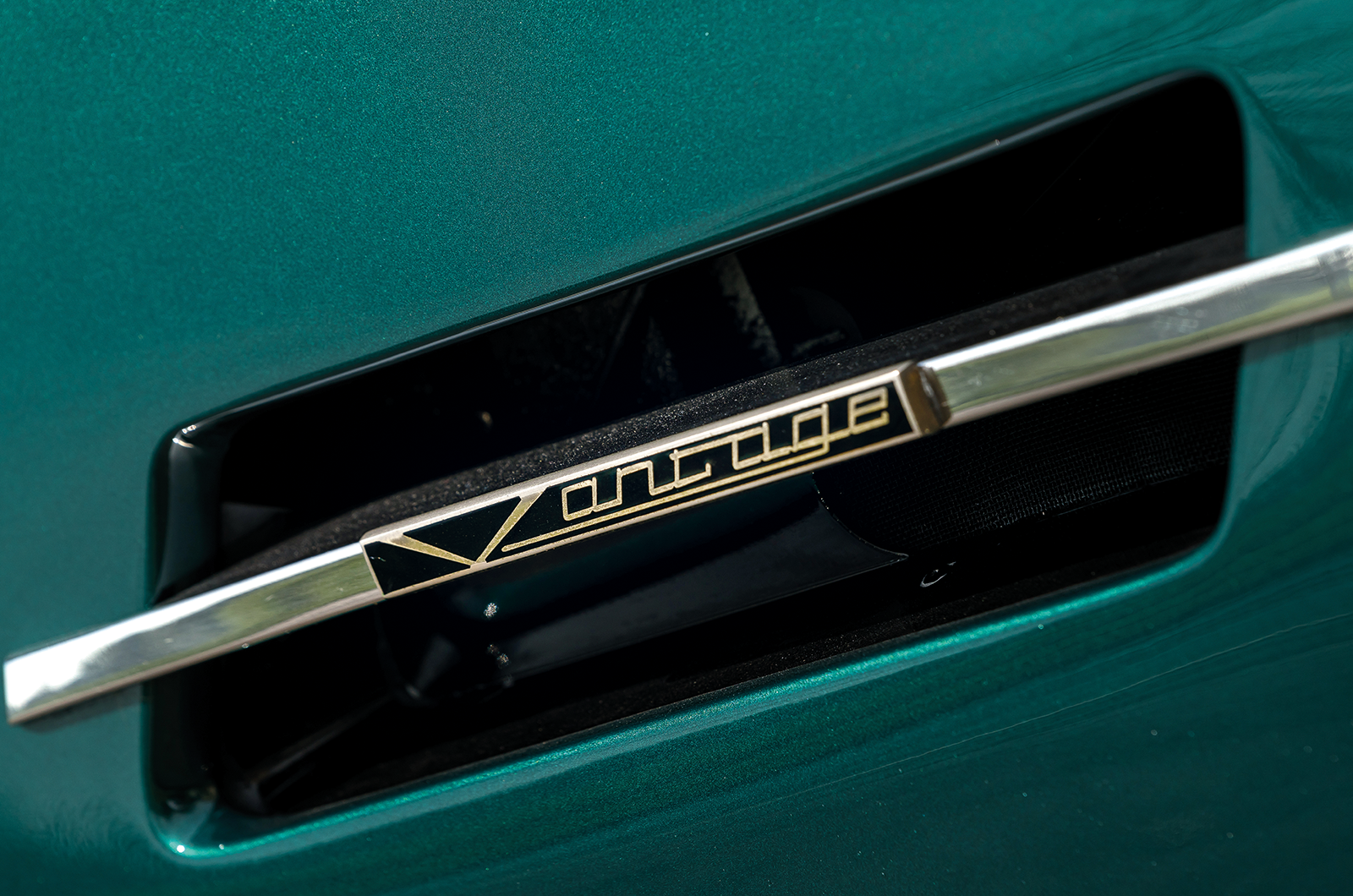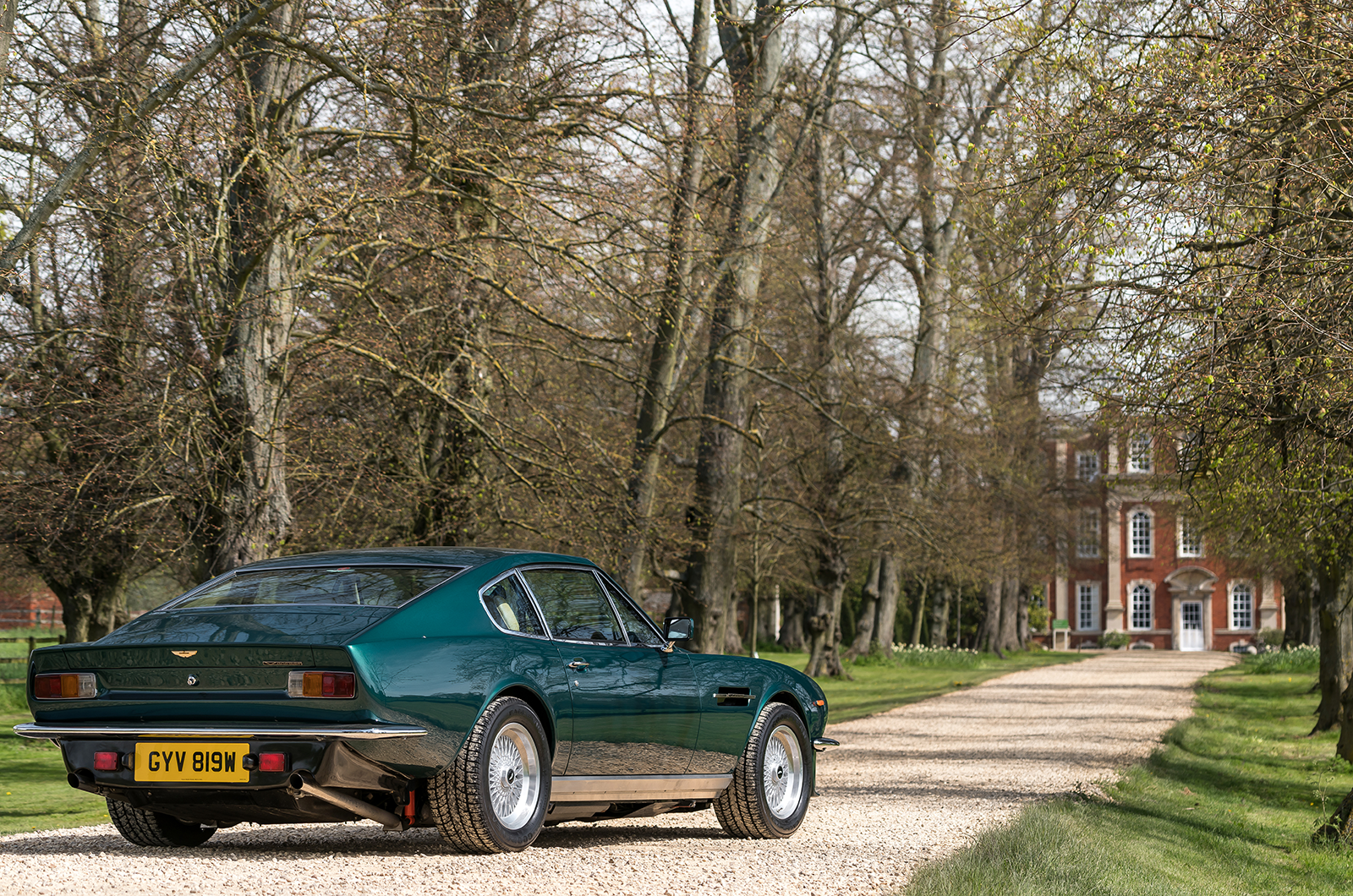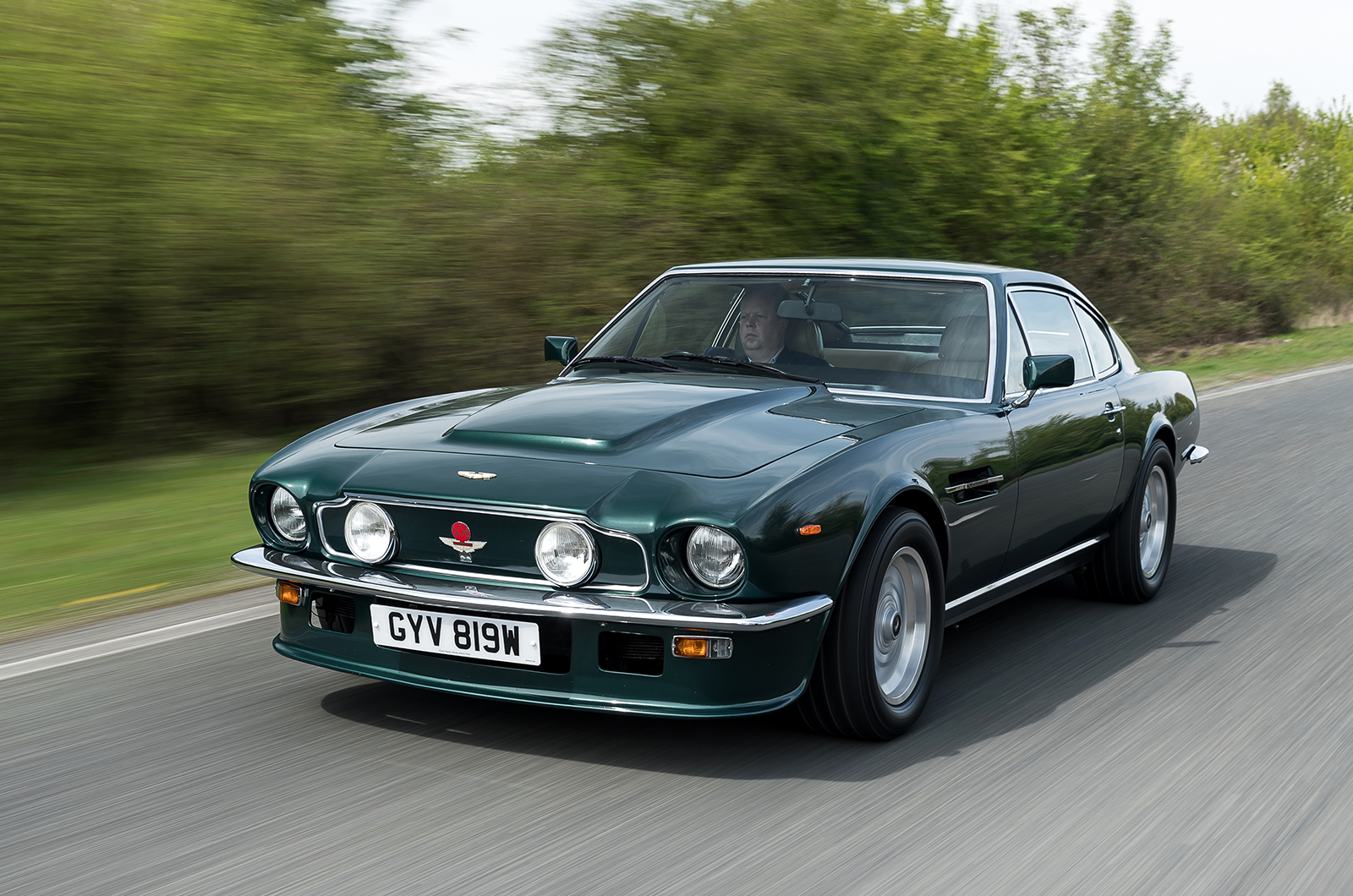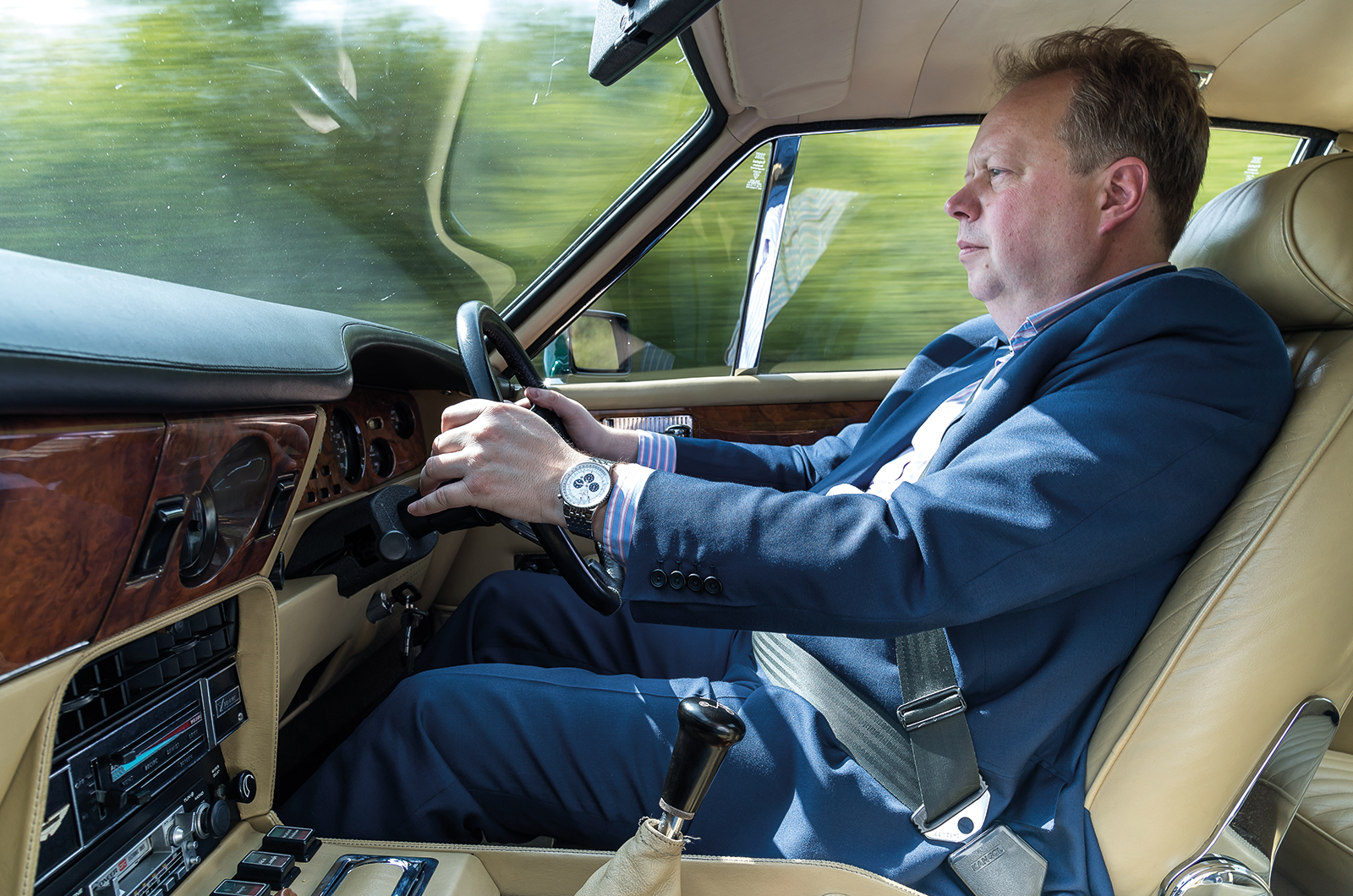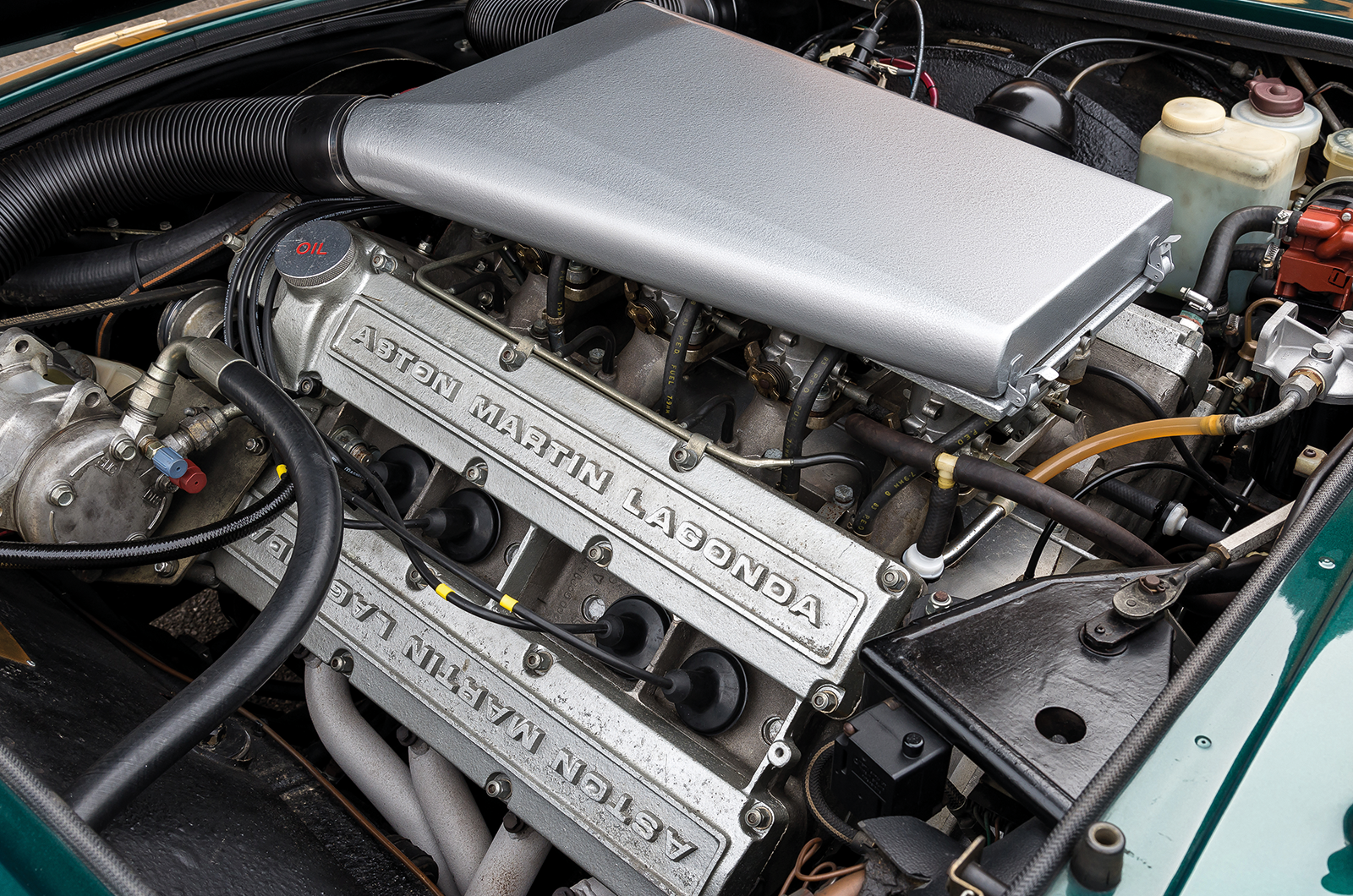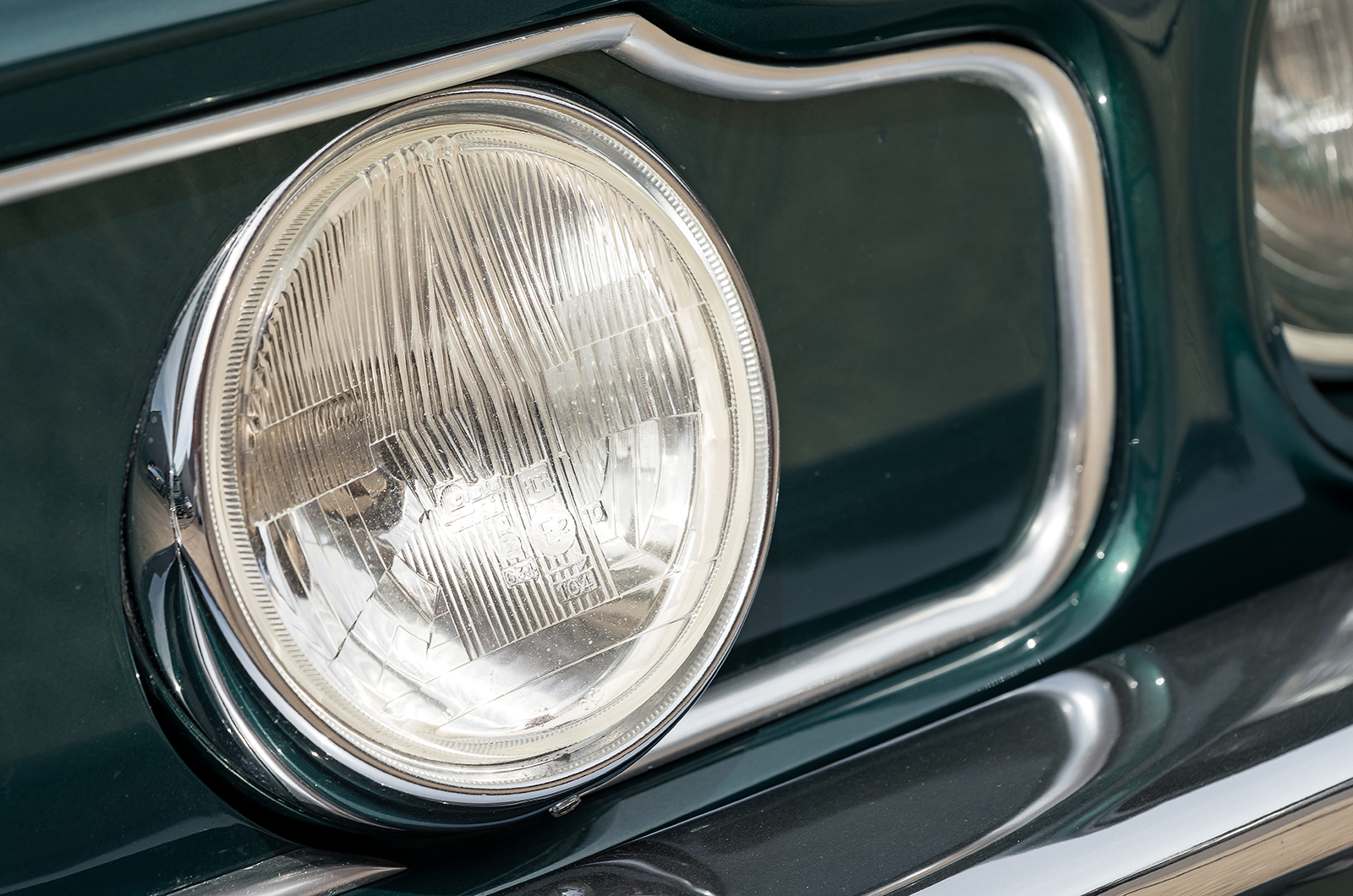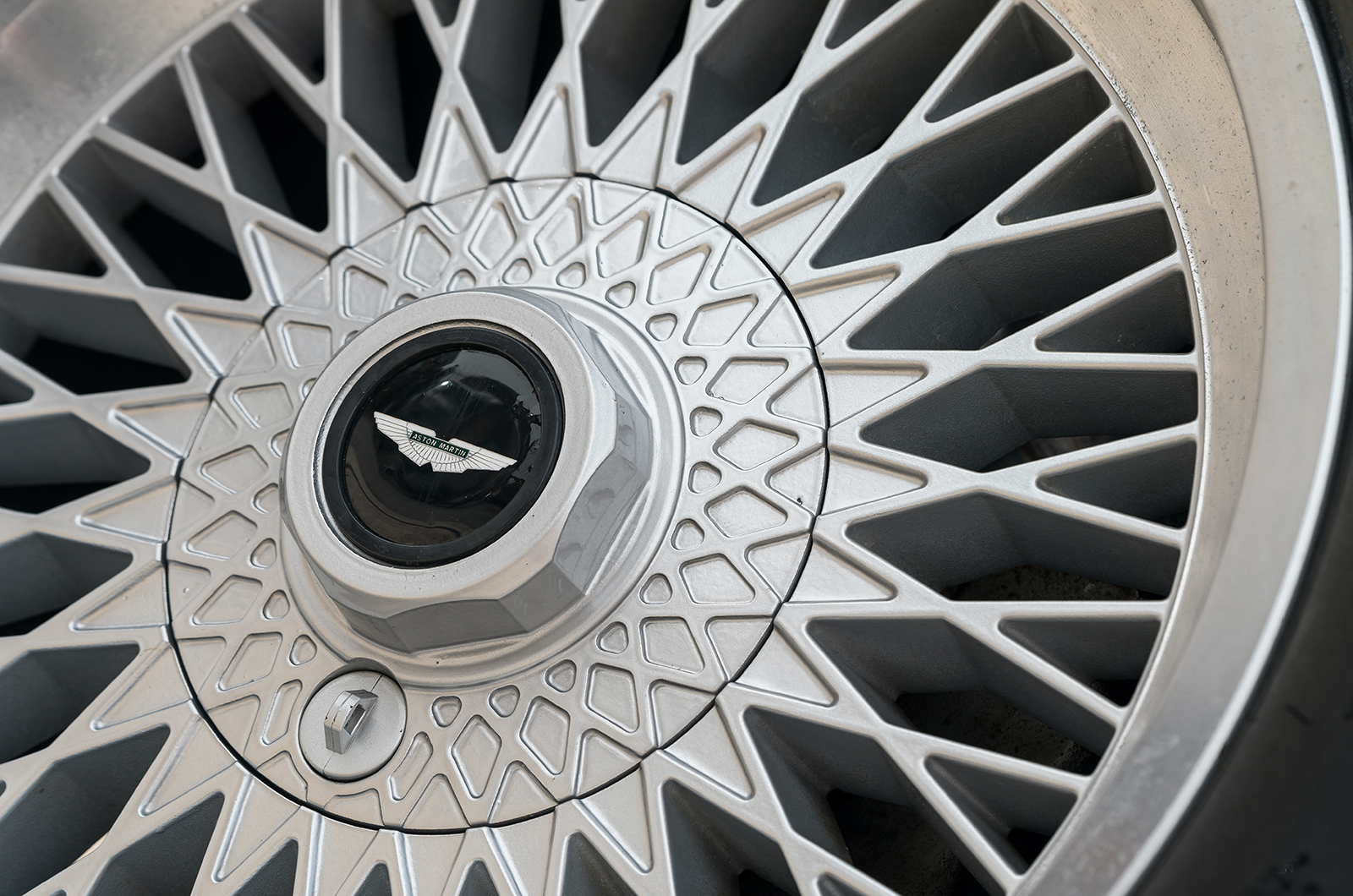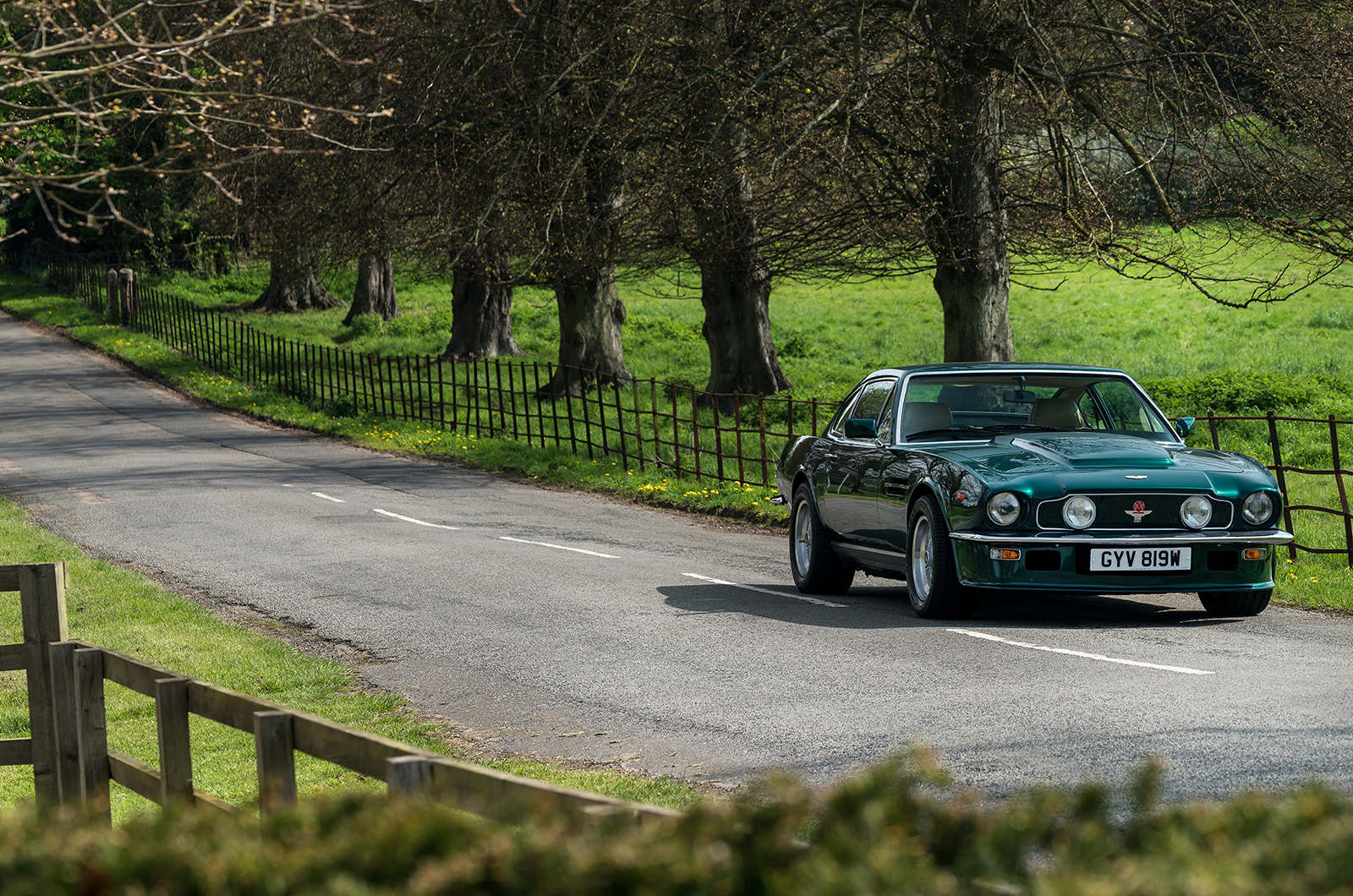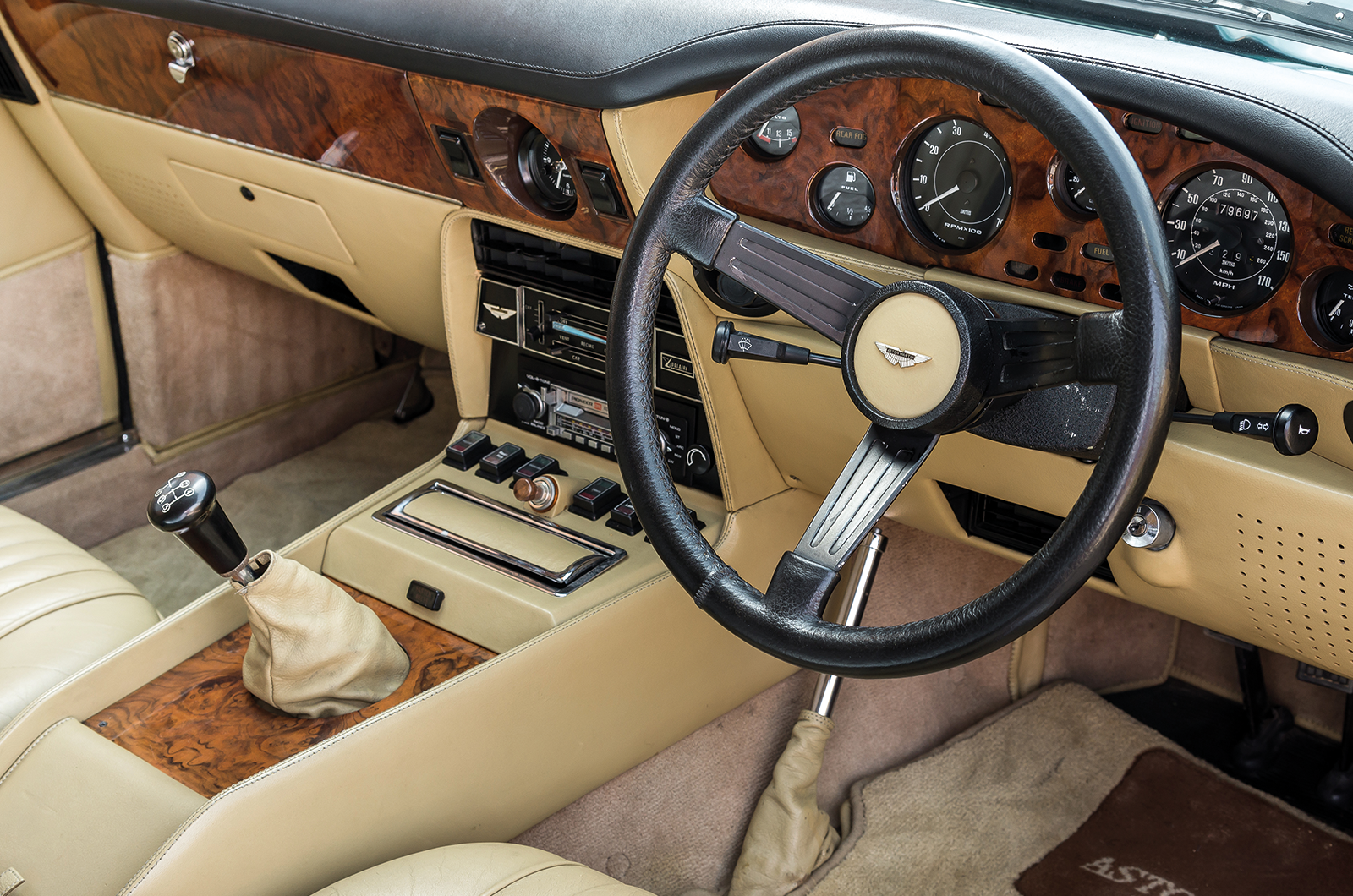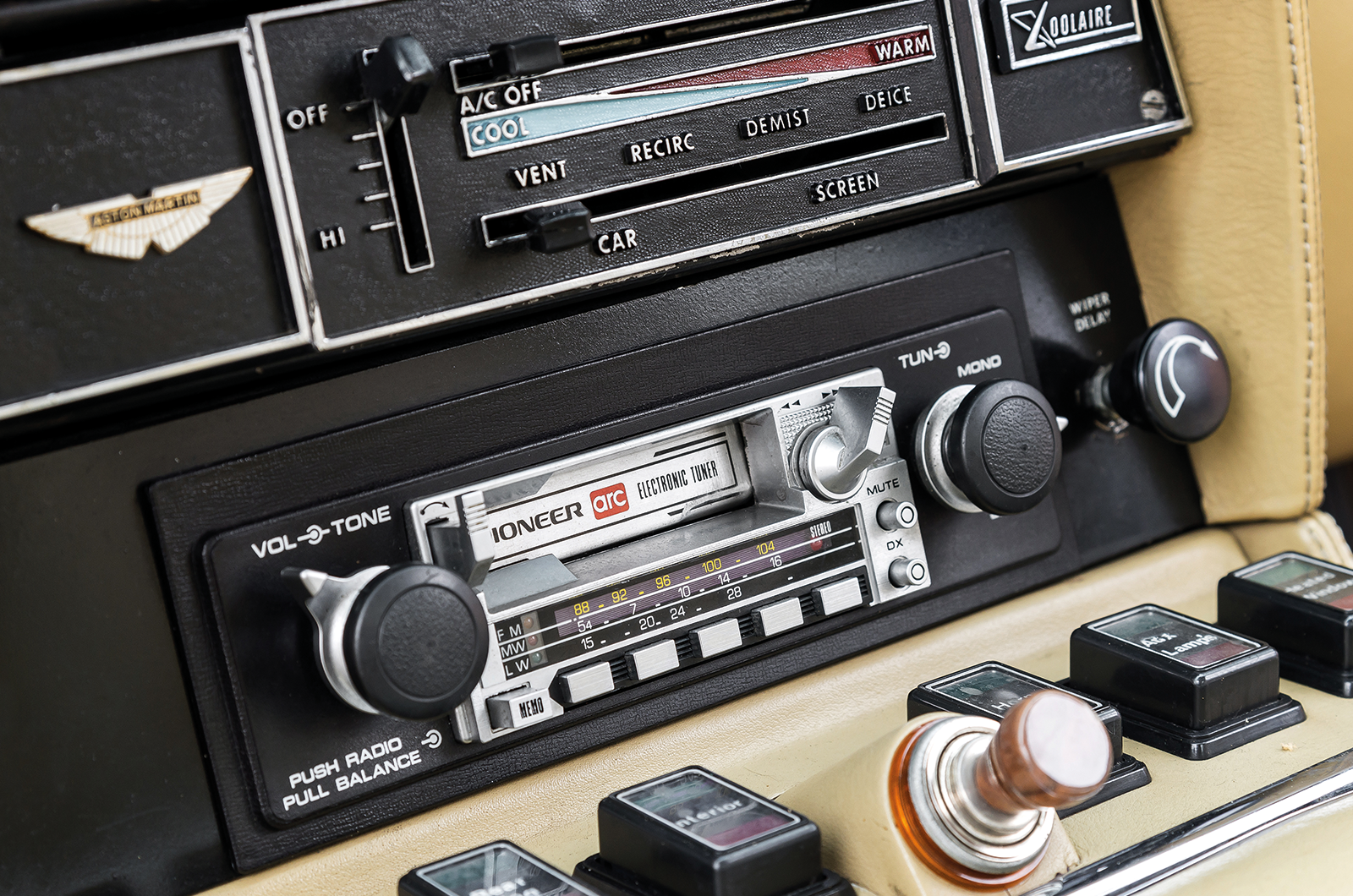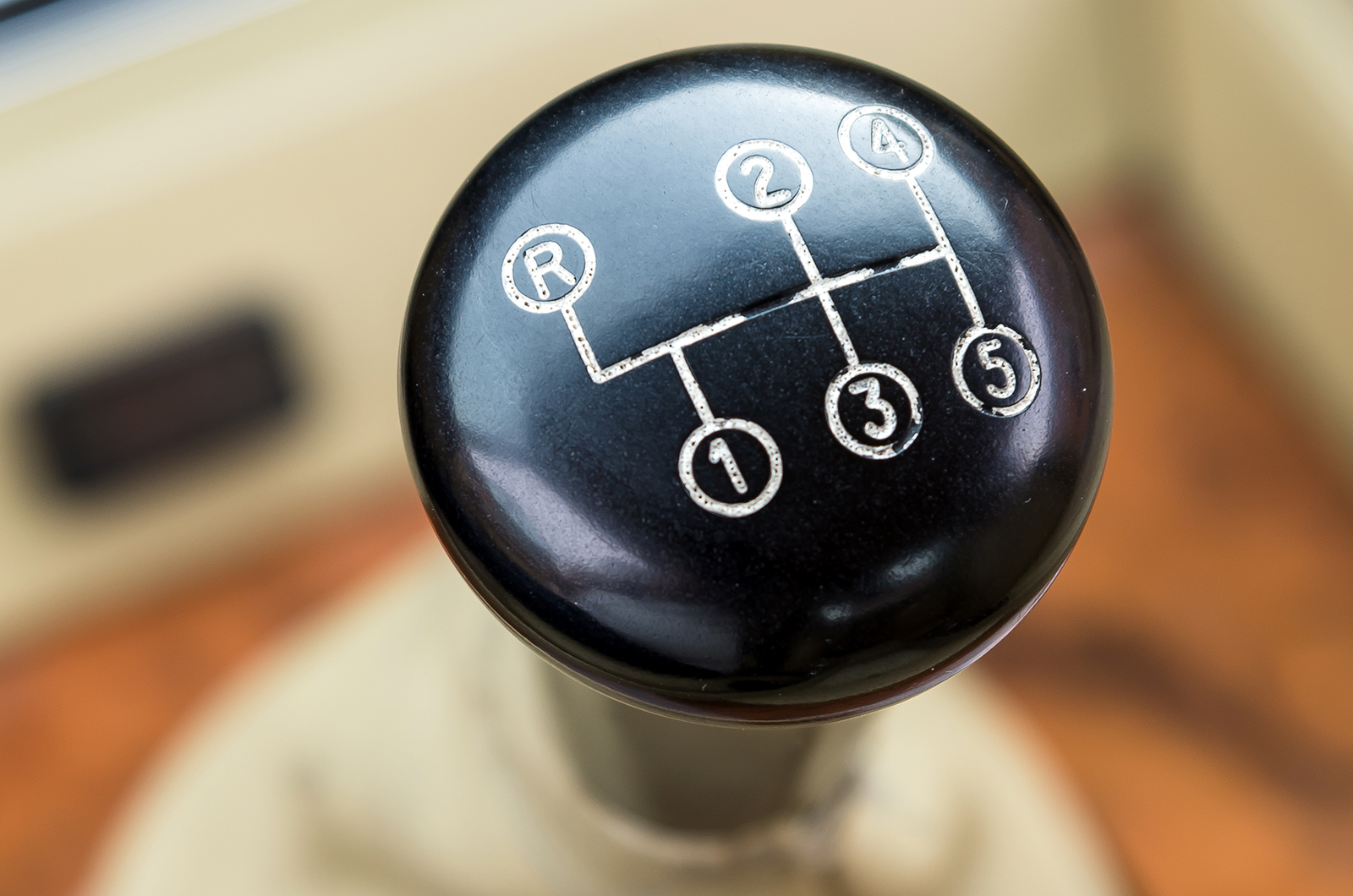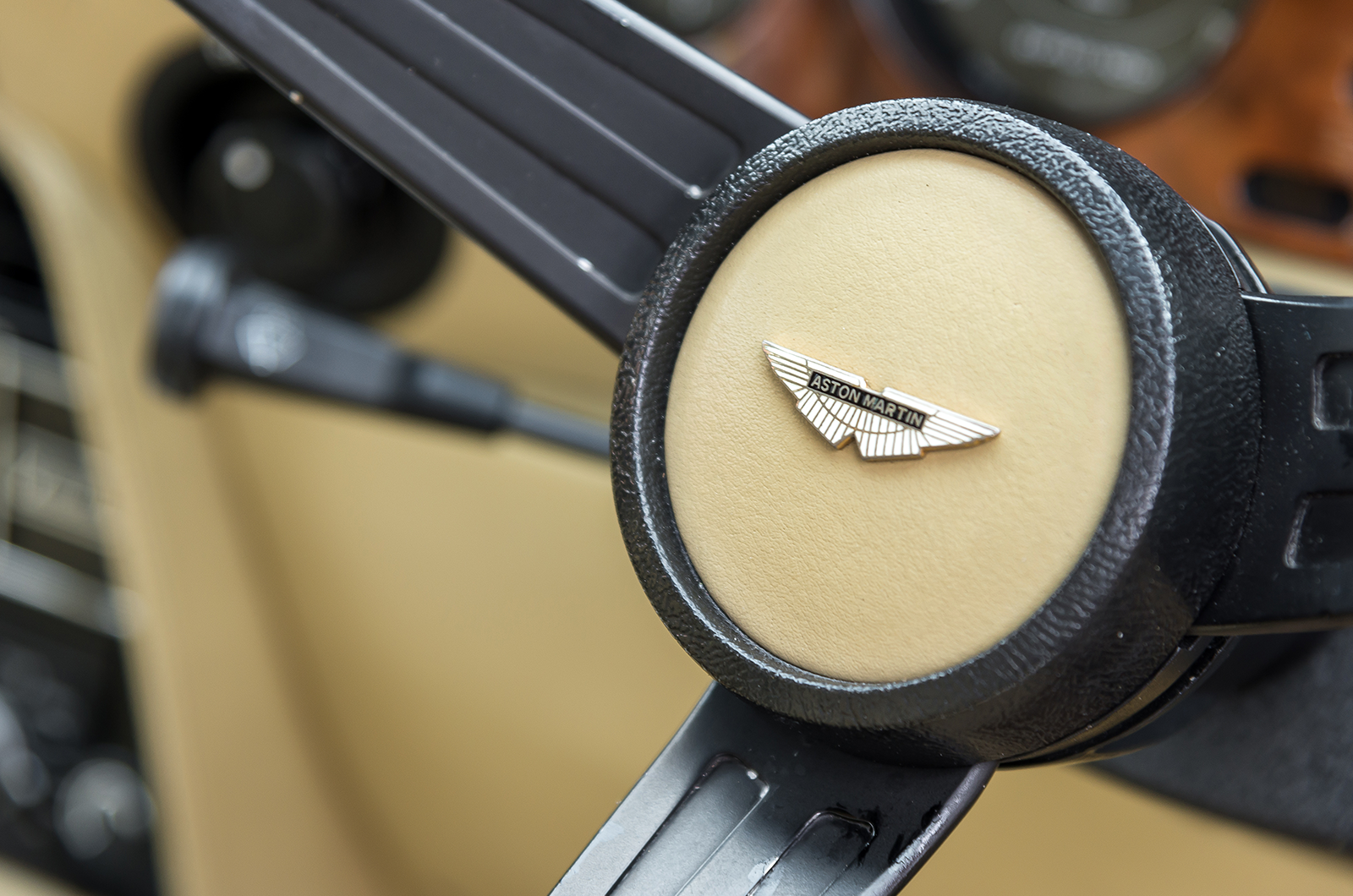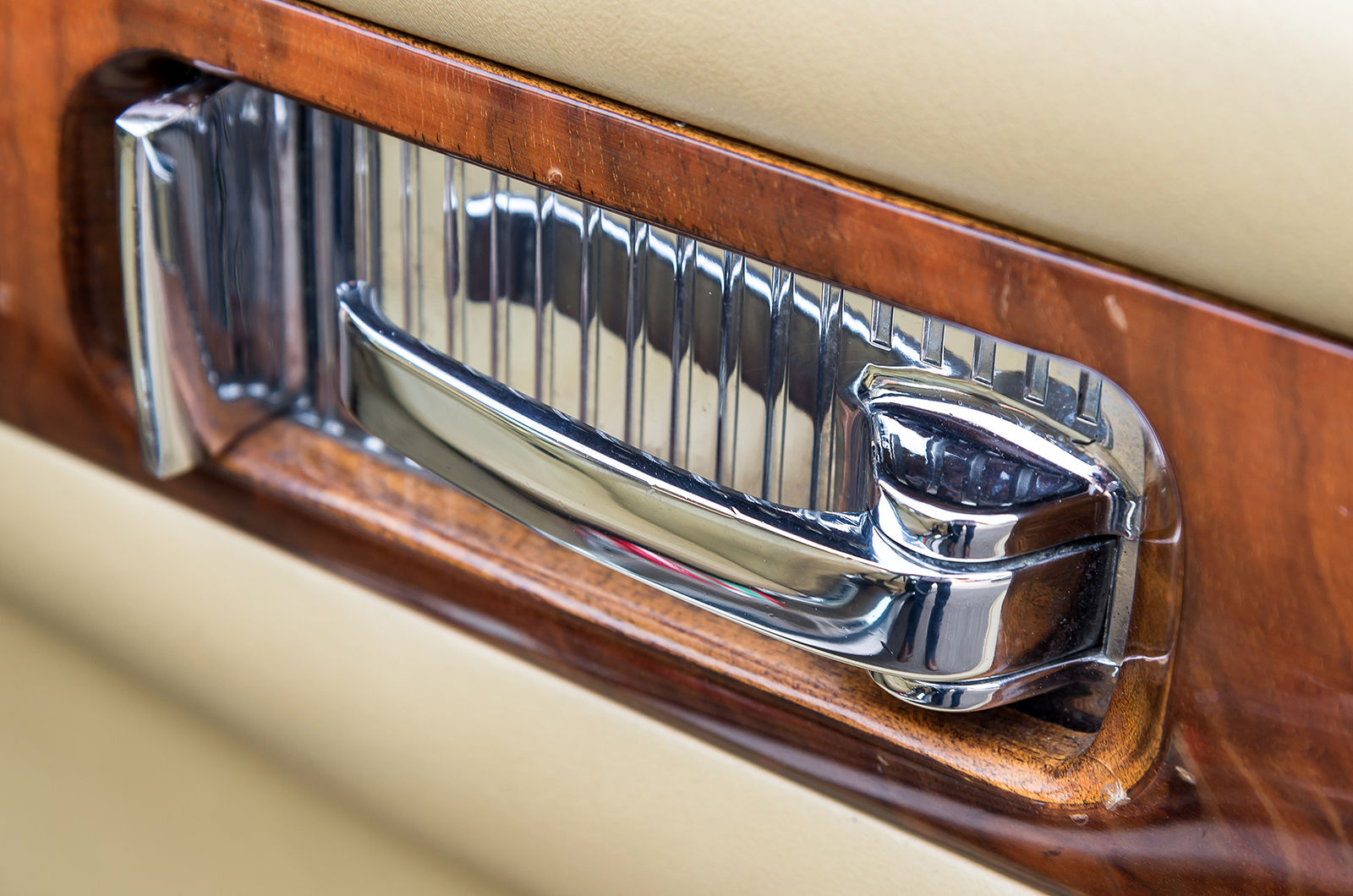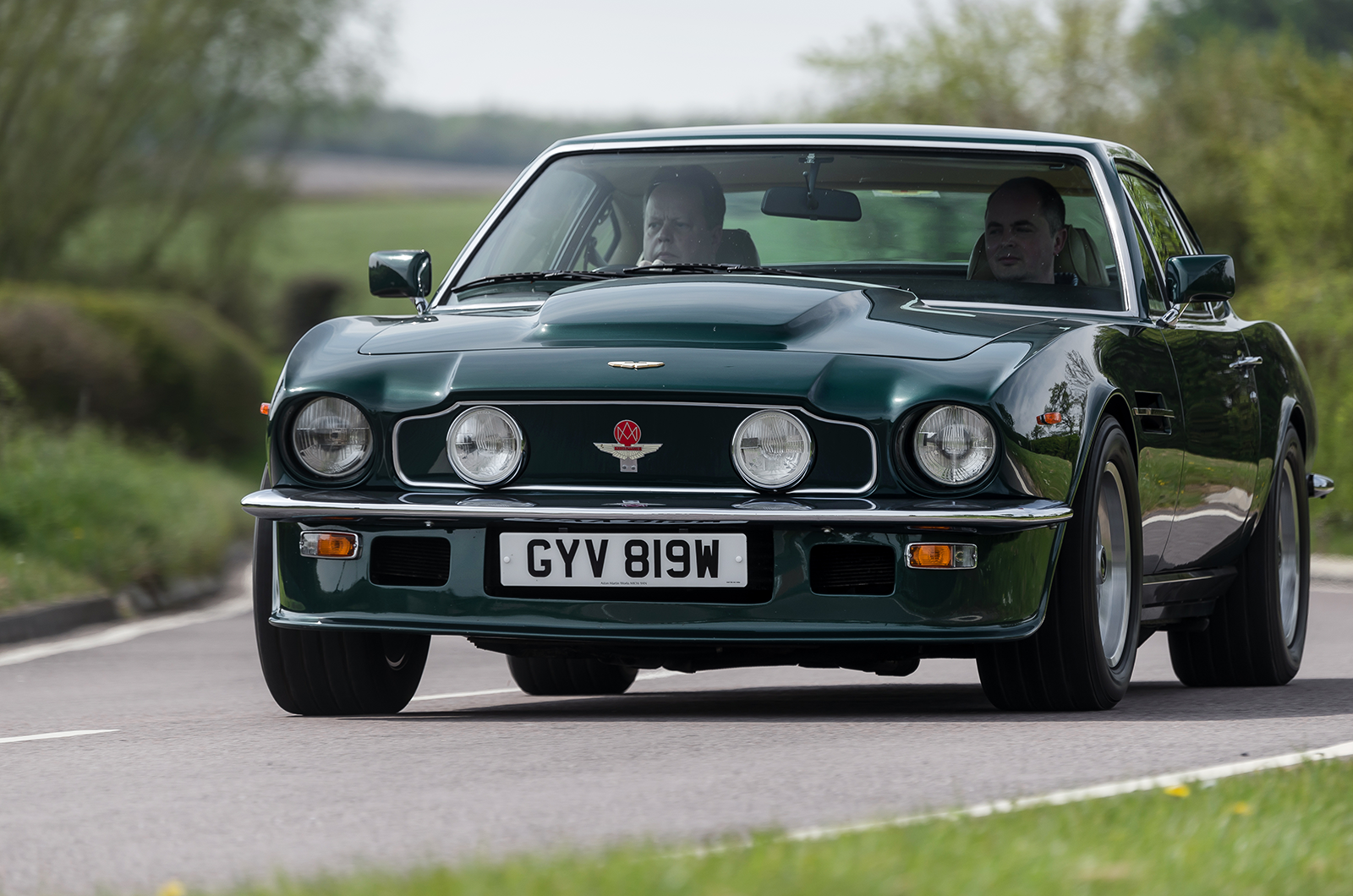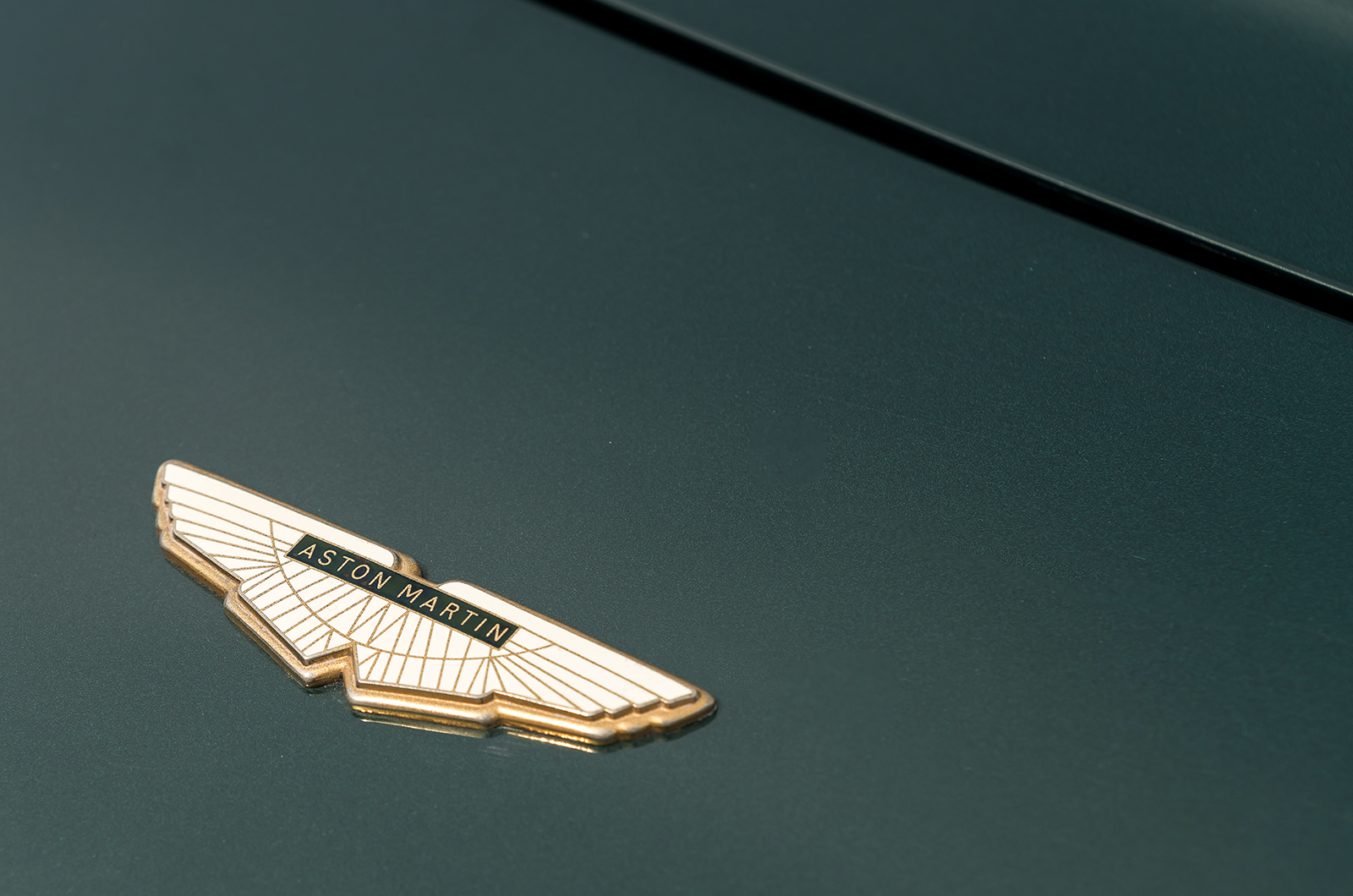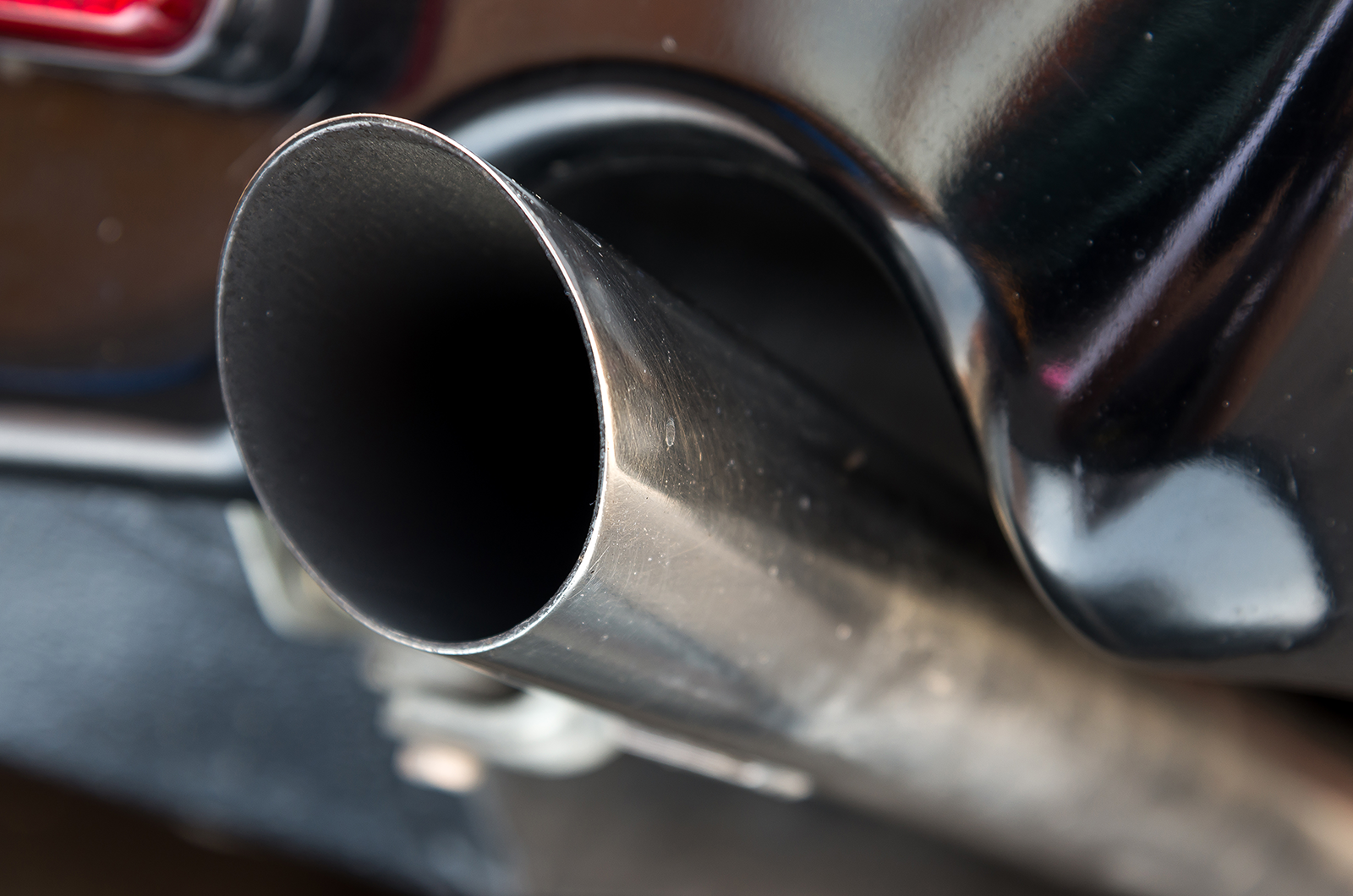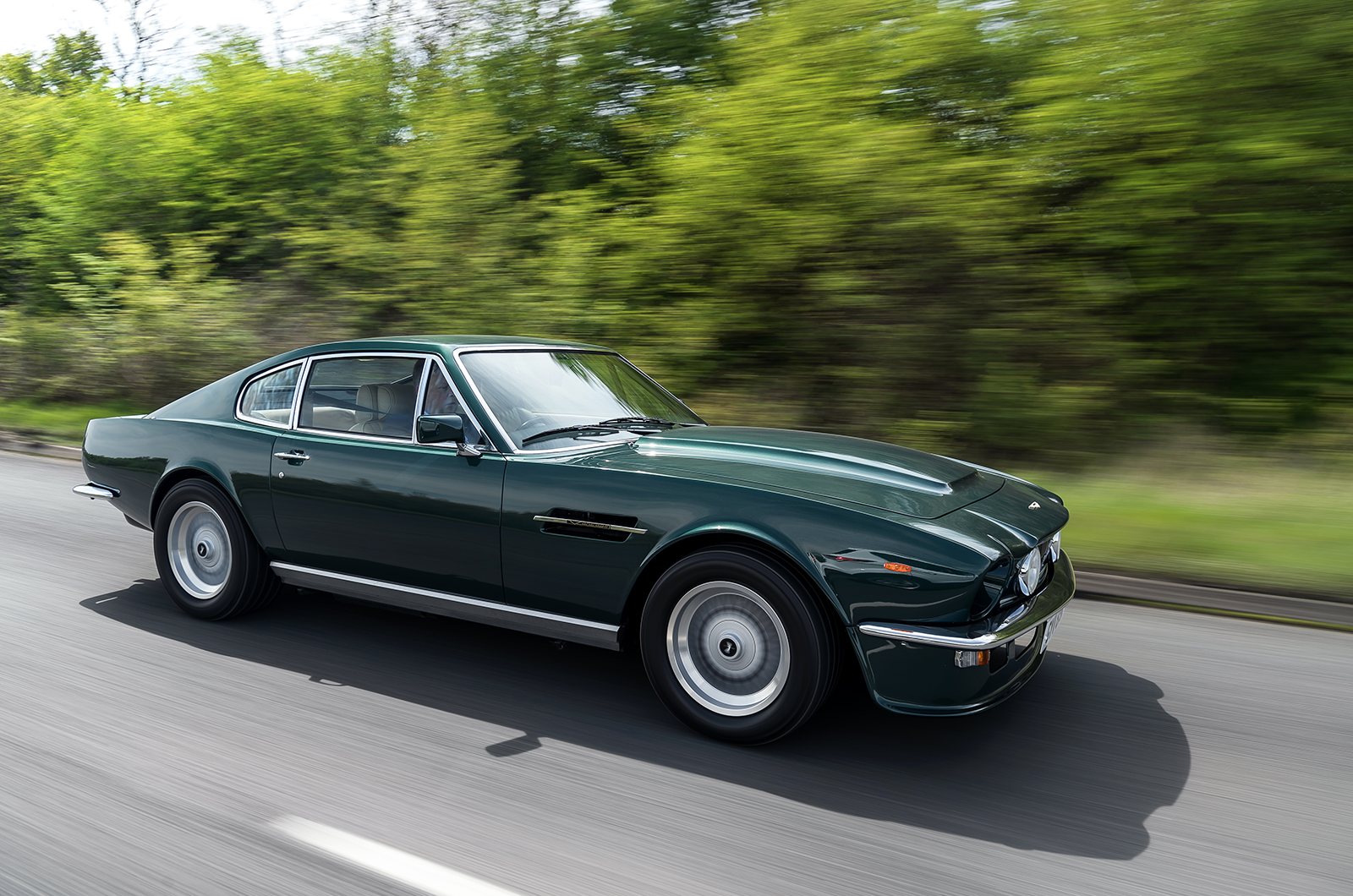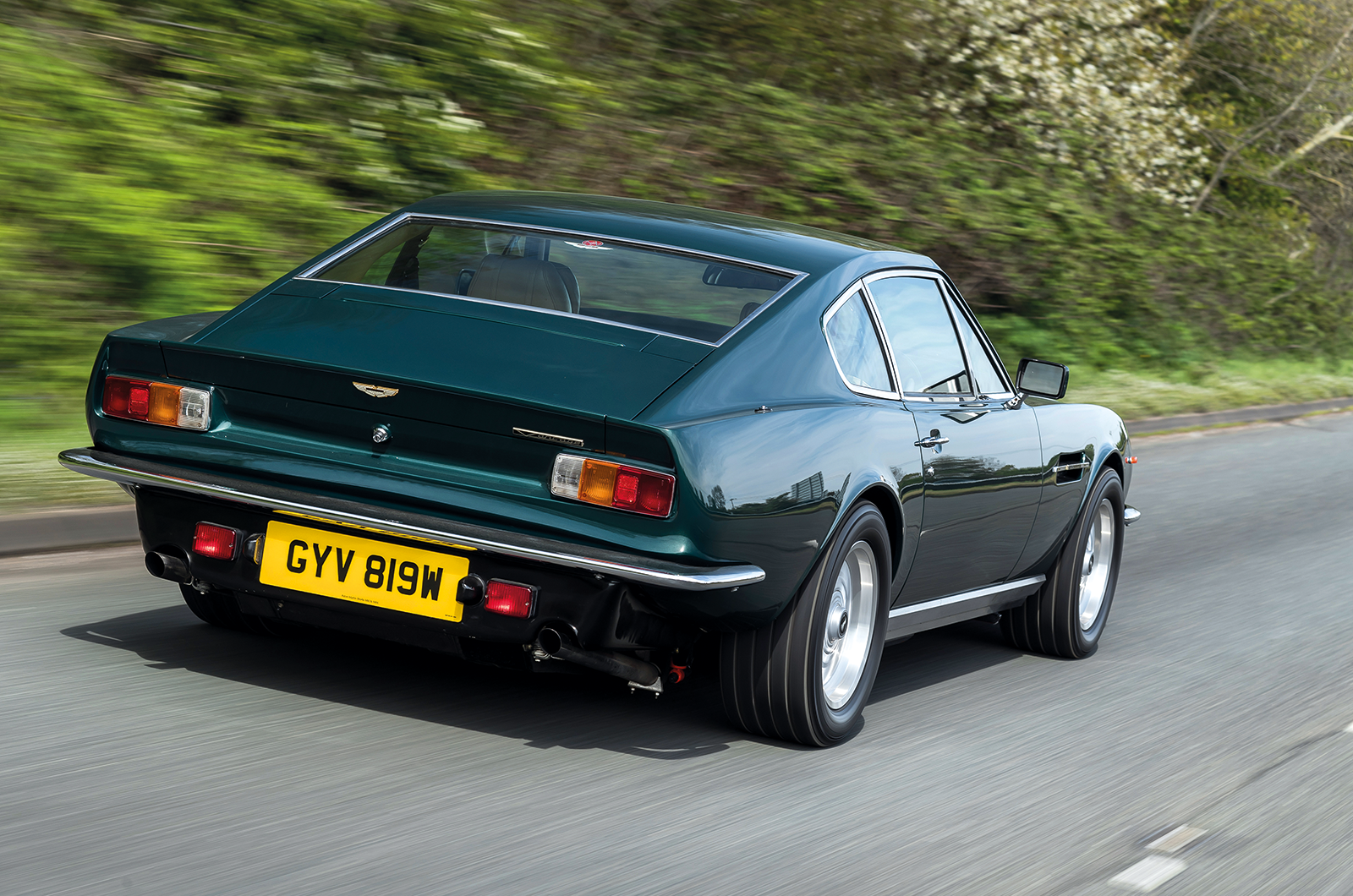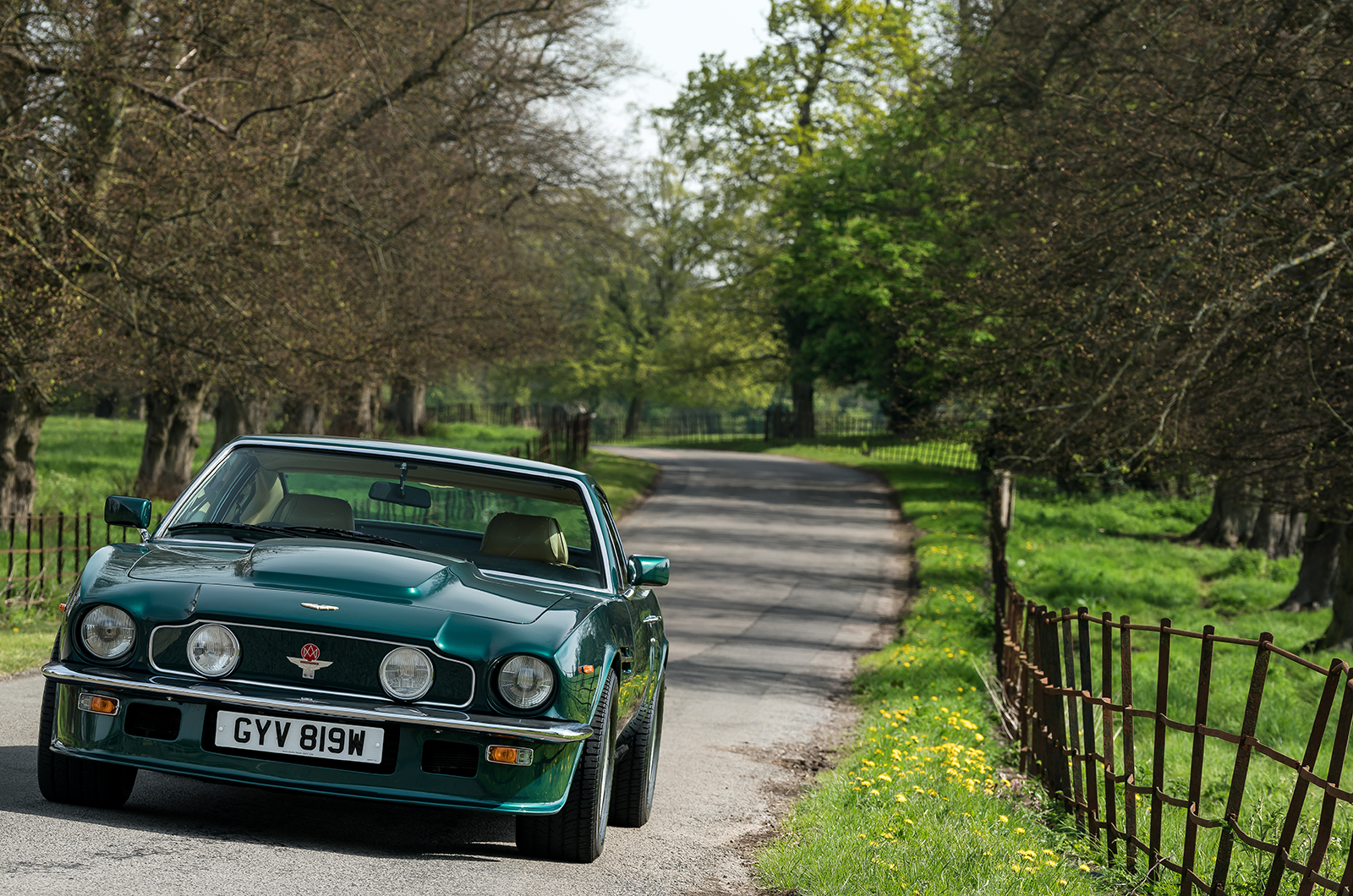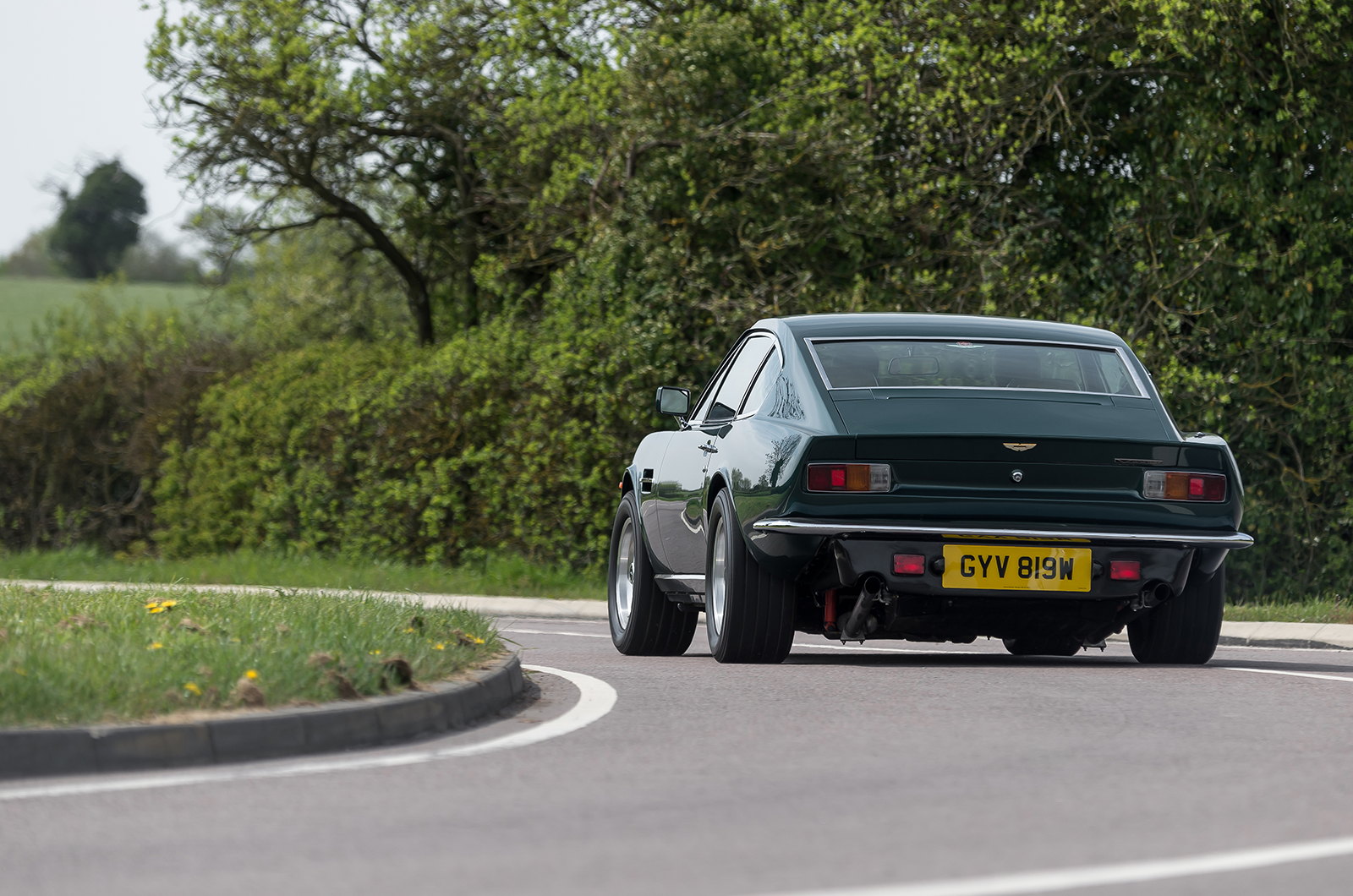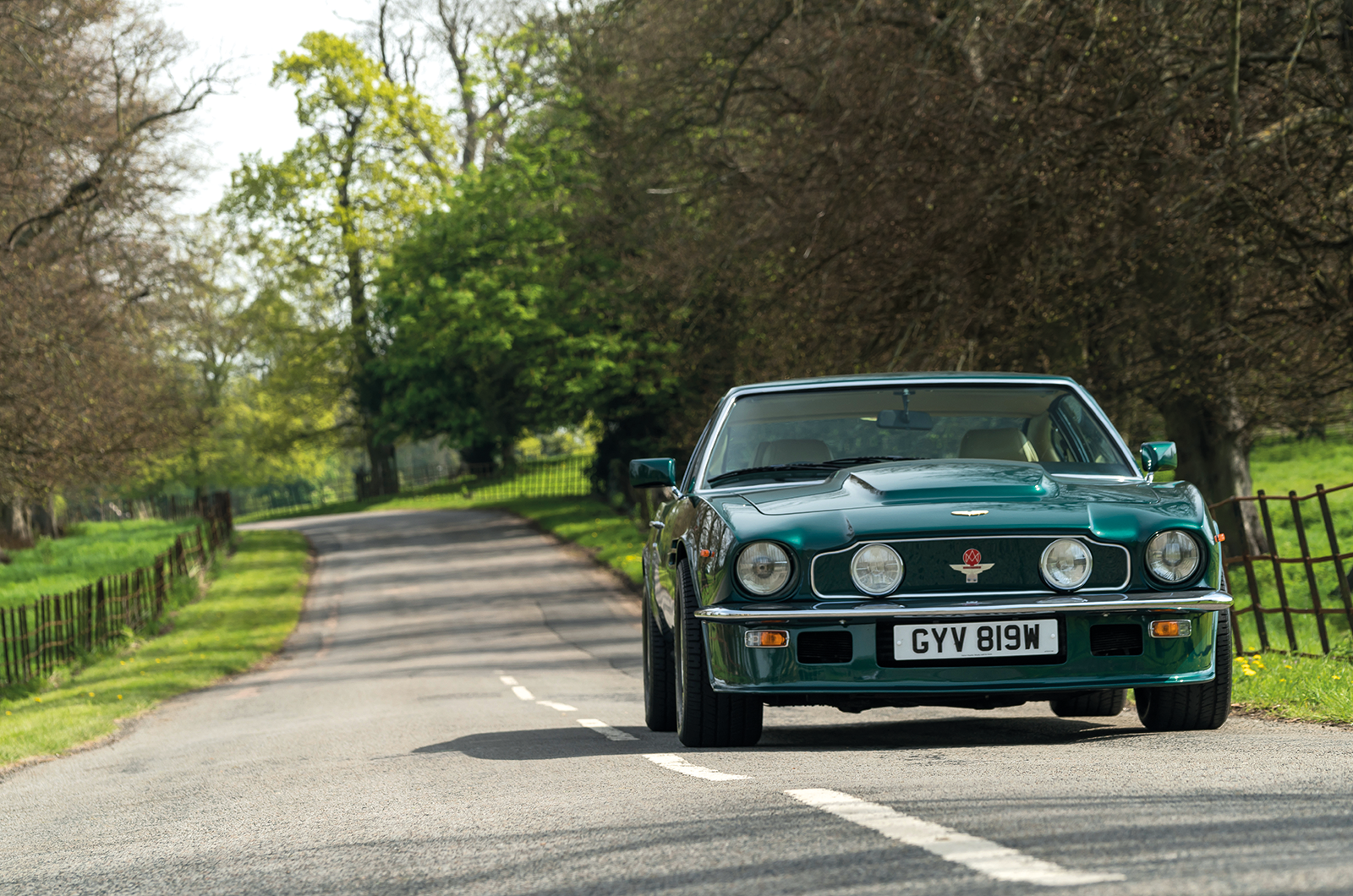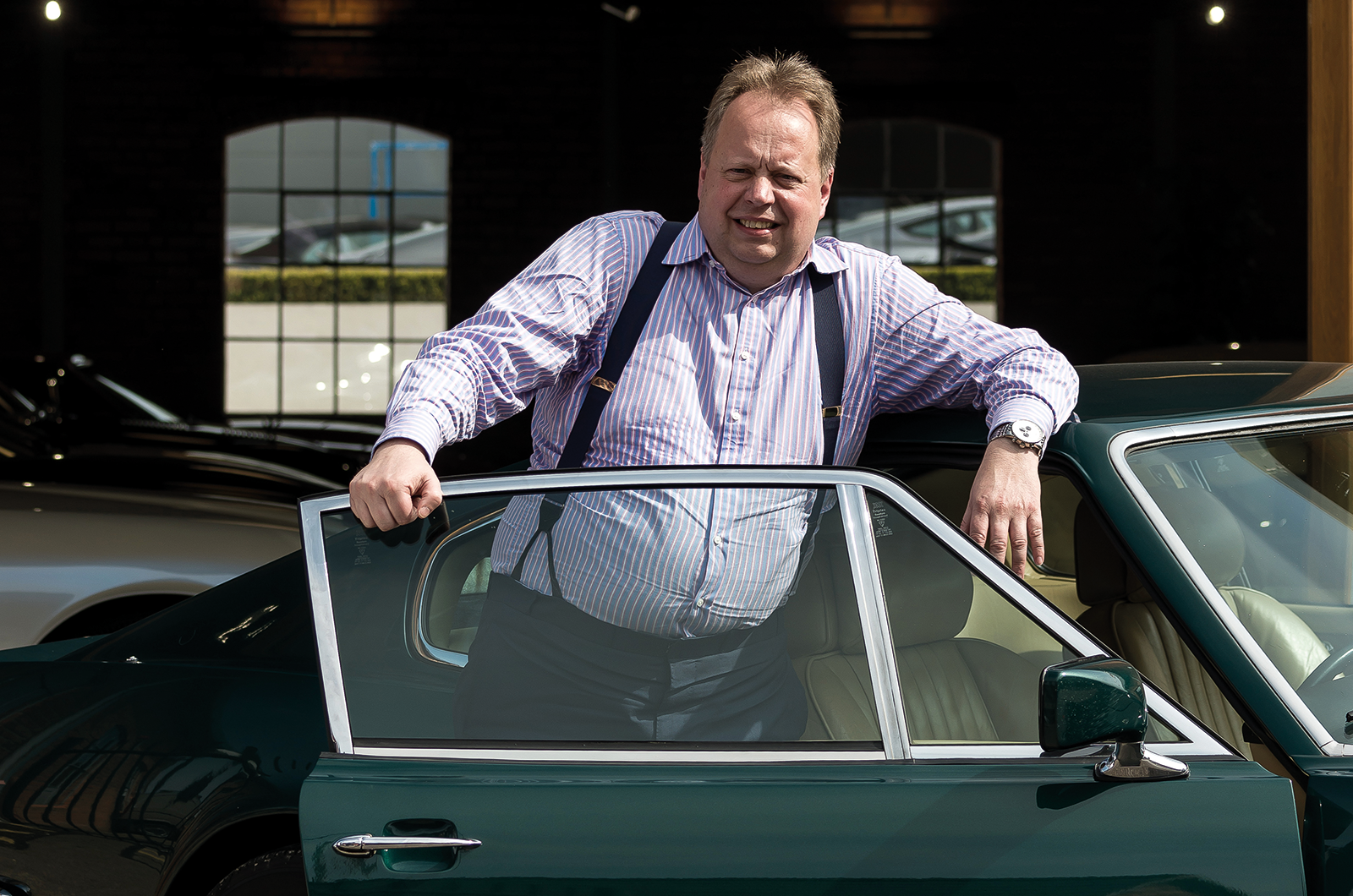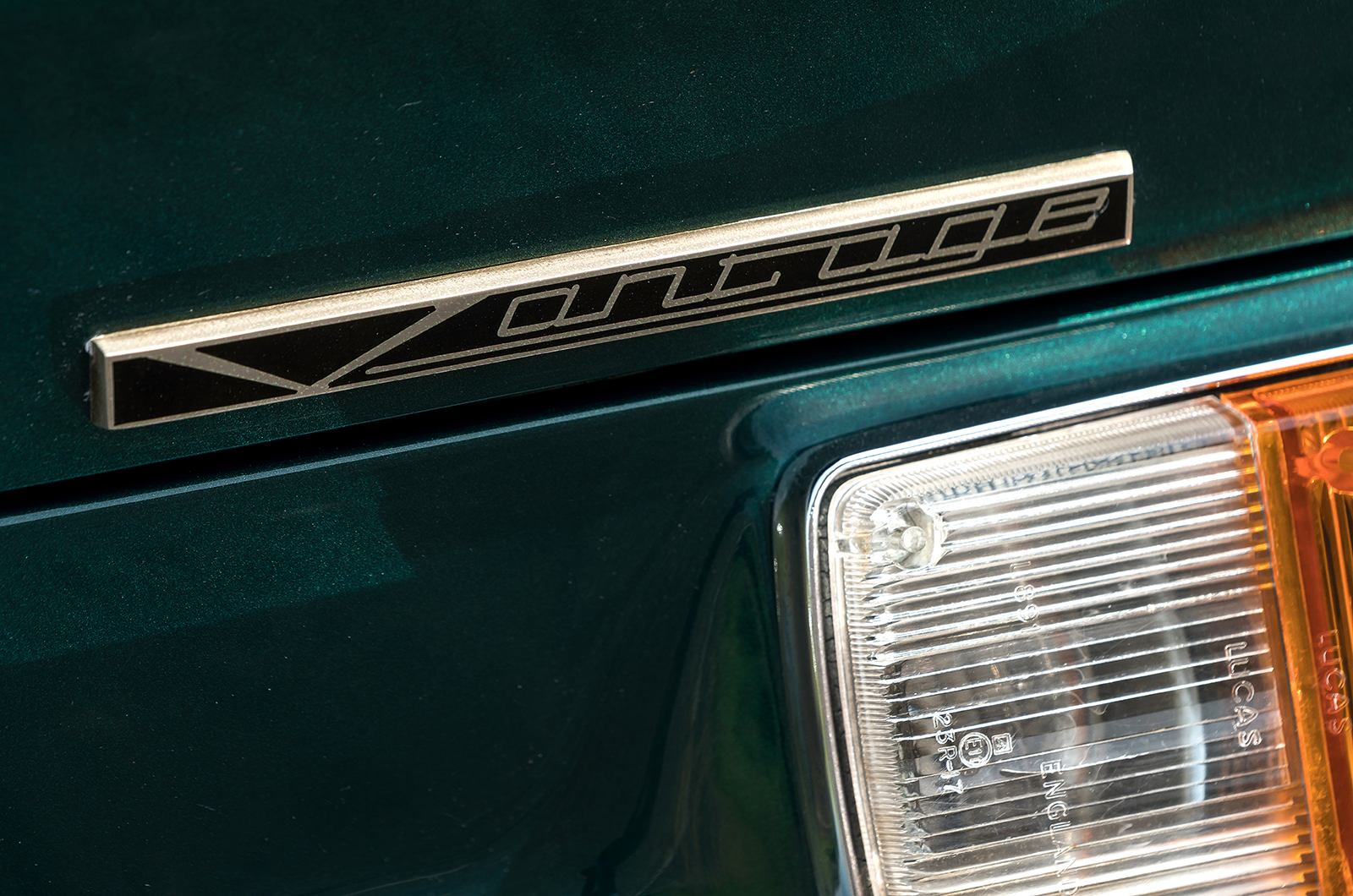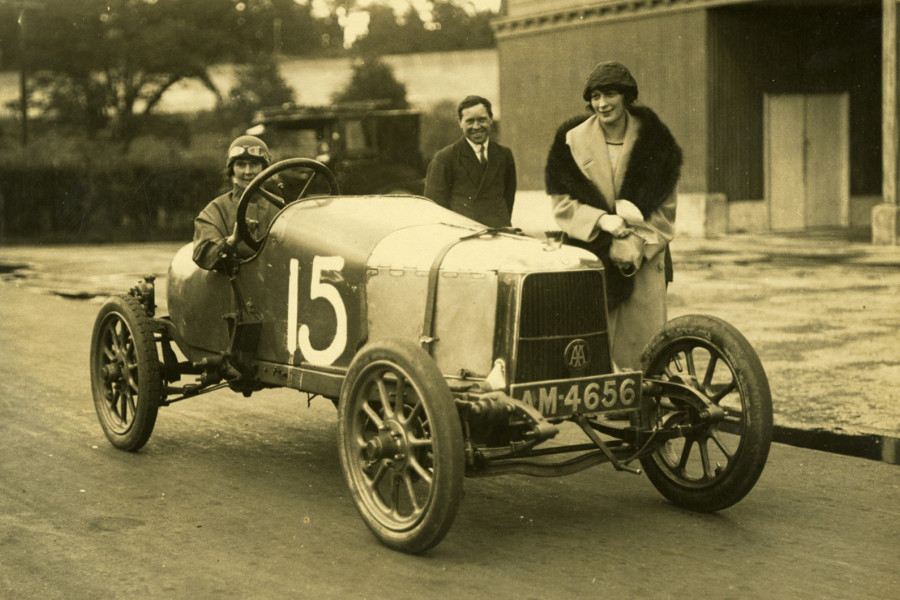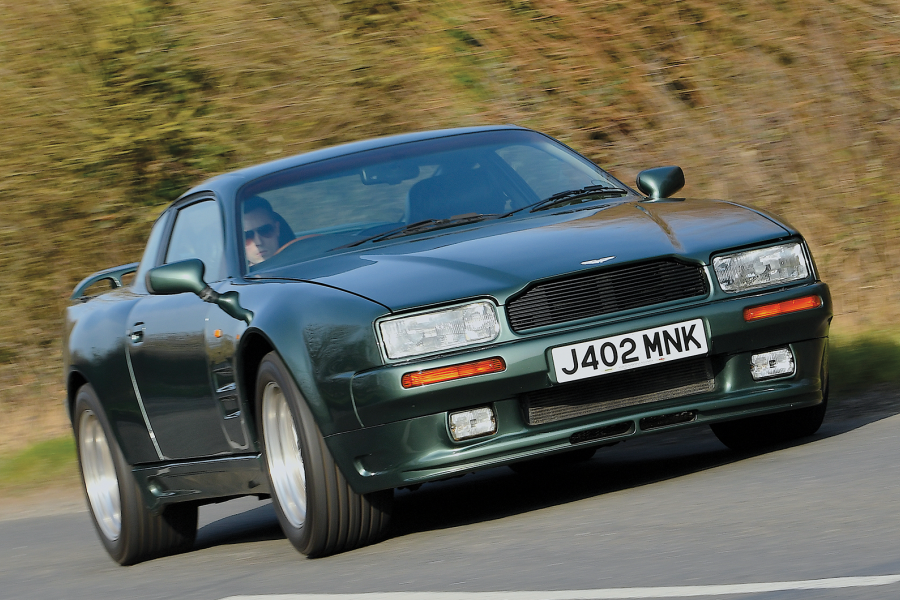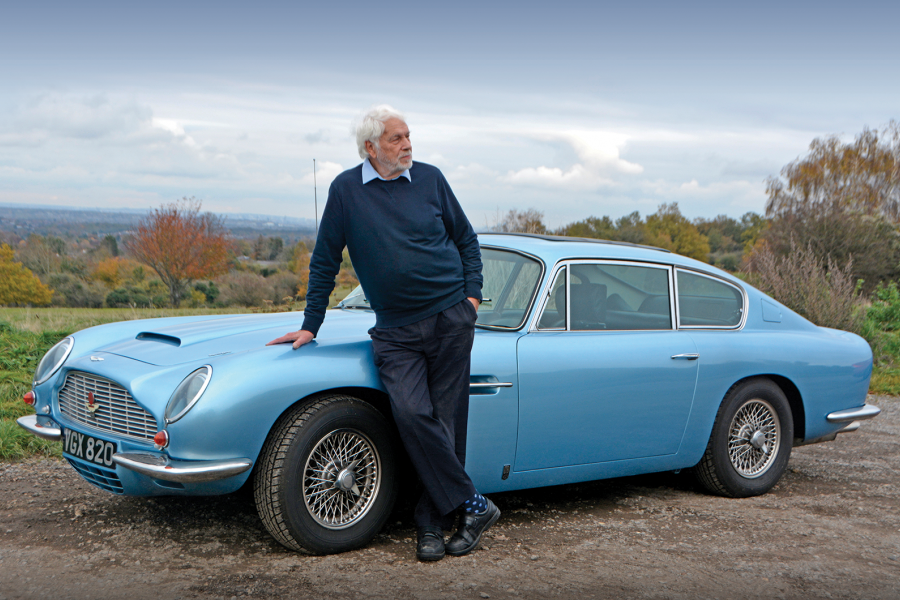Even the power steering is ‘heavy’– that is to say it only assists at low speeds and seemingly fades away thereafter, which is really as it should be.
Accelerating away in the dogleg bottom gear, the suave gurgle of combustion gives way to a bellow; the change across to second is ponderous and, yes, that clutch is heavy, but you forgive it for its progression.
It doesn’t pull enthusiastically in top until you’re doing around 50mph, but well-stacked gears mean you don’t notice this much and are instead mindful of how evenly matched in weight all the controls are, a well-judged heft that means you never press the brakes too hard (they are superb once warm) to the point of low-speed lock-up, or fail to balance throttle against clutch accurately for anything less than a smooth getaway.
Which is not the same as saying the V8 Vantage would make a good driving-school learner’s car, particularly with its grim 38ft turning circle.
There is much more throttle travel than you first realise, and real bite doesn’t come until you are pulling 2000rpm.
From here the revs shoot round and 60mph comes up in a flash once the engine climbs on the cams again.
The shift from second to third at 80mph is much slicker but you need be decisive if you are to avoid wrong-slotting.
Squeeze the throttle hard and the immense torque lifts the nose, shoves you back into your leather seat and lunges the Aston forward with a superb growl that cannot fail to stir the blood and tingle the spine.
Third feels as if it would be good for 115mph – maybe 120 – and it is sobering to think that if you used the full 6250rpm there would still be one more gear to come as you hit 140mph.
I suspect the Vantage would be very stable at that sort of speed (virtually a cruise with another 30mph to come in a plod-free fantasy world where someone else is paying to fill the 23-gallon tank), but at half that it is steady as a rock.
Such stability does not come at the cost of agility, however, because the Vantage is superbly controllable, progressive and forgiving.
The good news starts with the steering, which is precise without being twitchy, ideally weighted and geared while telegraphing its messages beautifully through a 15in wheel that looks relatively small but is a delight to the touch.
You do not toss the Vantage around casually like an Alfa (something about its size, never mind its value, tends to demand respect), but the sense of control, its resistance to understeer and roll, plus the grip it can generate, quickly build a graphic picture of what it would be capable of in more skilled hands than mine.
The Vantage was a heroic sort of car, and the final act for a design that had long since outlived most of its ‘traditional’ rivals of the ’60s and ’70s.
For those with deep enough pockets who rejected the impracticality of Countachs and Boxers, and thought an XJ-S too cheap, too common and too slow, there wasn’t much else to choose from in the realm of handbuilt, uncompromisingly fast front-engined GTs in the 1980s.
Even those who tried to dismiss the Vantage as an anachronistic dinosaur usually ended up falling in love with it.
Part muscle machine, part vintage thoroughbred, it was both a brute and a gentleman but also a car in which, putting aside the strength of its personality, it was difficult to fault in the important things.
This was a car out of its time that found success late in life.
For me it comes from an era that has no fantasy element or ‘cool’ associations, but judged in isolation the V8 Vantage probably represents the pinnacle of Aston’s achievements as an independent manufacturer.
Images: Max Earey
A word from the owner
When senior auto executives pose next to their company’s classic products, you often get the strong impression that their heart isn’t really in it. But when former Aston Martin CEO Andy Palmer stands beside this gleaming 1980 V8 Vantage, he wears a grin that comes from the pride of ownership. The Vantage hasn’t been borrowed for our shoot; it’s Palmer’s own car, bought in 2015 for a sizeable amount of his own money.
“I couldn’t afford a DB5 or a DB6, even if I wanted one,”he says. “When I came back to the UK [from Nissan], my plan was always to get something nice. The Vantage was on that list – very close to the top, in fact. This is the car I lusted after when I was a teenager. I was really looking for a 1979 car; that was the year I started work. But 1980 is close enough. That was the year I got my licence.”
A ‘standard’ Vantage is still more than up to keeping pace with modern traffic, but Palmer’s car has been upgraded to the brawnier ‘X-Pack’ specification, meaning 432bhp. “I was lucky to avoid getting done by a speed camera the first time I drove it,” he admits. “It was one of the mobile ones and fortunately he was still setting up; it would have been very embarrassing.”
The Vantage has also changed colour to green from its original brown, but in every other regard it’s as it was when it left Newport Pagnell for the first time – right down to the period radio/cassette player. “I’ve still got my cassettes,” says Palmer, “I listen to The Stranglers on it!”
Mike Duff
Factfile
Aston Martin V8 Vantage
- Sold/number built 1977-’89/534
- Construction square-tube steel chassis, aluminium panels over steel body frame
- Engine all-alloy, dohc-per-bank 5340cc 90º V8, four twin-choke Weber 48IDF2 carburettors
- Max power 390bhp @ 5800rpm (X-Pack 432bhp)
- Max torque 380lb ft @ 4500rpm (X-Pack 395lb ft)
- Transmission ZF five-speed manual, RWD
- Suspension: front independent, by double wishbones, anti-roll bar rear de Dion axle, trailing arms; coil springs, Koni adjustable dampers f/r
- Steering power-assisted rack and pinion
- Brakes ventilated discs, twin servos
- Length 15ft 1in (4585mm)
- Width 6ft (1829mm)
- Height 4ft 5in (1346mm)
- Wheelbase 8ft 7in (2609mm)
- Weight 4001lb (1816kg)
- 0-60mph 5.4 secs
- Top speed 170mph
- Mpg 13.4
- Price new £25,999
- Price now from £250,000*
*Price correct at date of original publication
READ MORE
Lamborghini Espada: ideal for a school run?
Citroën SM and Oldsmobile Toronado: groundbreaking GTs
Don’t miss our Aston Martin Greatest Hits special
Engineered for excellence: Lancia Flaminia vs Mercedes-Benz 300SE
Martin Buckley
Senior Contributor, Classic & Sports Car
